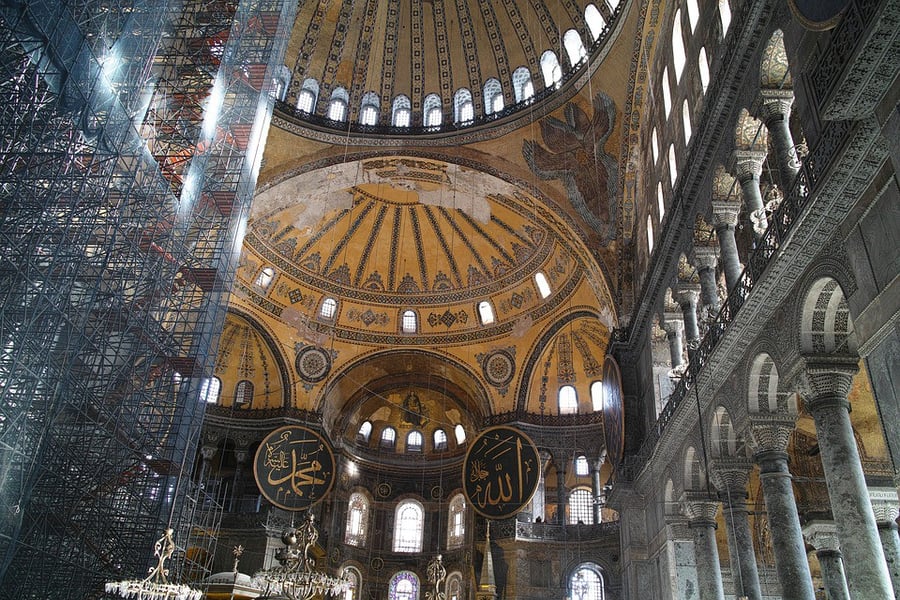Hagia Sophia
The world's unique buildings and structures

Info: Hagia Sophia was a Greek Orthodox Christian patriarchal basilica (church), later an imperial mosque, and is now a museum (Ayasofya Müzesi) in Istanbul, Turkey. From the date of its construction in 537 AD, and until 1453, it served as an Eastern Orthodox cathedral and seat of the Patriarch of Constantinople, except between 1204 and 1261, when it was converted by the Fourth Crusaders to a Roman Catholic cathedral under the Latin Empire. The building was later converted into an Ottoman mosque from 29 May 1453 until 1931. It was then secularized and opened as a museum on 1 February 1935. Famous in particular for its massive dome, it is considered the epitome of Byzantine architecture and is said to have "changed the history of architecture". It remained the world's largest cathedral for nearly a thousand years, until Seville Cathedral was completed in 1520.
Country: Turkey
Architect: Isidore of Miletus, Anthemius of Tralles
Wiki link: https://en.wikipedia.org/wiki/Hagia_Sophia
Video: https://www.youtube.com/watch?v=e4SUrFdWLfE
Comments
The world's unique buildings and structures was created by Free Custom Map Builder that powers thousands of custom online maps.
Want to build own custom map for your business or community? Try Mapotic's custom map maker and create customizable or branded maps in minutes. Leverage filters, custom categories, crowdsourcing and SEO. Create a free custom map.